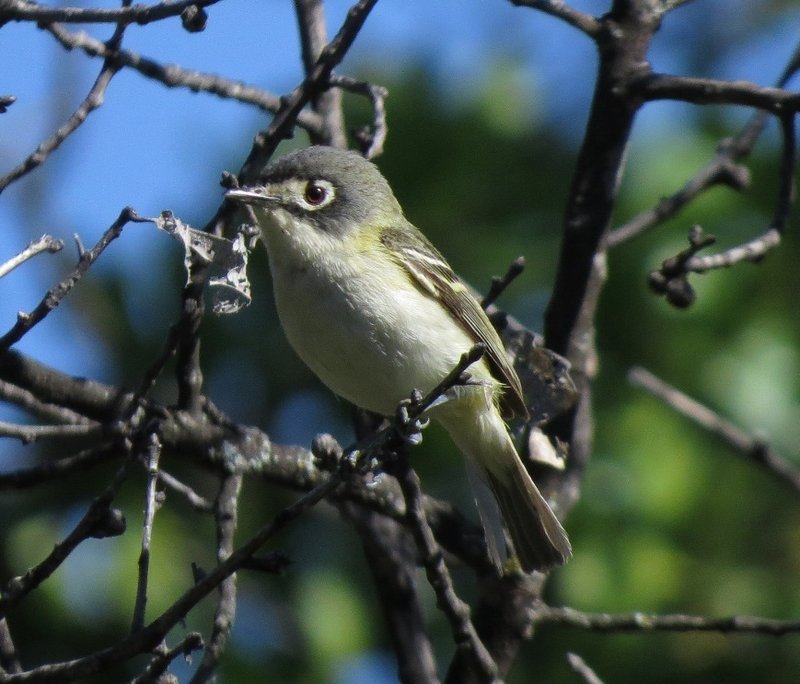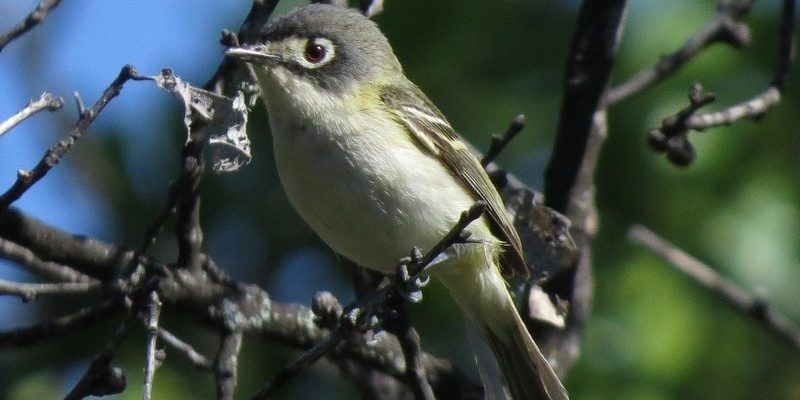
Imagine wandering through a sun-dappled forest, where the sound of chirping birds surrounds you like a gentle melody. One of the delightful singers you might hear is the Vireo, a small but captivating bird known for its distinct calls and lively behavior. These little creatures, often overlooked for their more colorful relatives, possess a charm and character all their own. Vireos are not just another bird in the trees; they have fascinating traits and behaviors that make them worth knowing about.
Vireos belong to the family Vireonidae and are primarily found in the Americas. With over 50 species, you’ll notice that they vary in color, size, and habitat preferences. Some species have a striking greenish hue, while others sport earthy browns and yellows. Their diversity and adaptability help them thrive in various environments, from dense forests to open woodlands.
Whether you’re an avid birdwatcher or a curious nature lover, exploring the world of Vireos can be a rewarding experience. Let’s dive deeper into what makes these birds unique, from their diet and behaviors to their habitats and songs.
Physical Characteristics
When you spot a Vireo, one of the first things you’ll notice is their small size, generally measuring around 4.5 to 6 inches in length. They have a stocky body and a short, blunt tail, making them look quite robust for their size. Their wings are broad, allowing for agile flitting through branches as they hunt for insects or fruit. Depending on the species, Vireos can exhibit a variety of colors, but most are adorned with subtle green, gray, or brown tones that blend beautifully with their surroundings.
One of the standout features of the Vireo is their strong, hooked bill, which is perfect for catching insects or grasping small fruit. Their eyes are often surrounded by distinct facial markings that can vary significantly among species. For example, the Red-eyed Vireo sports a noticeable dark stripe through its eye, giving it quite an expressive look.
Additionally, Vireos have a unique way of moving about their environment. You might witness them gleefully flitting from branch to branch, seemingly without a care, or hanging upside down to forage for food. This acrobatic behavior is not just entertaining—it’s essential for their survival as they search for insects and berries hidden among leaves.
Habitat and Range
Vireos are adaptable birds, found in a wide range of habitats that vary from tropical rainforests to temperate woodlands. They thrive in areas with dense foliage, where they can easily navigate through trees and shrubs. During the breeding season, you’ll often find them in deciduous and mixed forests, where they construct their nests in the forks of branches, using twigs, grass, and leaves to create a cozy home.
When it comes to their migratory habits, Vireos exhibit fascinating patterns. Many species are migratory, traveling thousands of miles to find warmer climates during winter. For instance, the Warbling Vireo breeds in North America and migrates to Mexico and Central America for the colder months. This journey can be risky, but it allows them to escape harsher weather and find abundant food resources.
Interestingly, some Vireo species, like the White-eyed Vireo, prefer more shrubby, open areas, showcasing their flexibility in habitat selection. This versatility is a key factor in their success as a species across diverse environments.
Diet and Feeding Habits
Vireos are primarily insectivorous, meaning that they enjoy a diet rich in insects. Caterpillars, beetles, and spiders make up a significant part of their meals, providing essential protein and nutrients needed for their energy needs. However, they are not exclusively insect eaters; Vireos also consume fruits and berries, especially during the fall when insects are less plentiful. Their diet changes with the seasons, highlighting their adaptability to food availability.
One of the most delightful aspects of watching a Vireo feed is their foraging technique. They often hang upside down to reach food hidden beneath leaves or in flowers, a skill that sets them apart from many other birds. As they probe through foliage, they might emit their characteristic calls, giving you a hint of their presence. Seeing them flit through the trees can be magical, underscoring the joy of observing nature at work.
In regions where Vireos migrate, their diet can also include nectar, making them accidental pollinators while they sip from flowers. This dual role as both insectivores and fruit eaters helps maintain the balance in their ecosystems, as they contribute to plant reproduction and insect population control.
Behavior and Social Structure
Vireos are known for their distinctive, melodic songs that often fill the air in their habitats. Each species has its unique call, which serves various purposes, including attracting mates and marking territory. The songs are usually soft and sweet, making it a pleasure to listen to them during a nature walk. Interestingly, their songs are often more prominent during the breeding season, with males singing to impress females and establish their presence.
Socially, Vireos can be quite engaging. They are often seen foraging in pairs or small family groups, especially during the breeding season. After nesting, juvenile Vireos may stay close to their parents for a while, learning essential survival skills and sharing food. This nurturing behavior highlights their strong family bonds, a trait that encourages the growth of their populations.
While Vireos can be gregarious, they generally prefer a life high in the trees. They are not particularly aggressive; however, they will defend their nesting sites from intruders. Their boldness in protecting their young is admirable, as they can often be seen chasing away larger birds that pose a threat.
Reproduction and Nesting
The reproductive habits of Vireos are fascinating. Most species mate for life, which is quite special in the bird world. Building nests typically starts in spring, where females take on the primary responsibility for nest construction. These nests are usually cup-shaped and made from a combination of plant materials, such as grass, twigs, and sometimes spider silk for added strength. You might even spot them hidden in the fork of branches, camouflaged by surrounding leaves.
Once the nest is complete, the female lays between 2 to 5 eggs, depending on the species. These eggs are usually pale blue or greenish, speckled with darker spots. After about two weeks of incubation, the chicks hatch, and both parents play a role in feeding them. It’s quite a sight to see the adults busily flying back and forth, bringing food to their hungry young.
After about two weeks, the fledglings are ready to leave the nest. However, they often stay close to their parents for a little while longer, learning how to forage and navigate their surroundings. This extended parental care helps increase their chances of survival as they venture out on their own.
Vireo Species Overview
| Species | Size (inches) | Habitat | Diet | Notable Call |
| Red-eyed Vireo | 5.5–6.3 | Deciduous forests | Insects, berries | Clear, musical phrases |
| Warbling Vireo | 4.7–5.3 | Riparian areas | Insects, fruit | Soft warbling song |
| White-eyed Vireo | 4.7–5.5 | Thickets, scrub | Insects, berries | Choppy, rhythmic notes |
| Bell’s Vireo | 4.5–5.5 | Brushy habitats | Insects, fruits | Short, quick phrases |
| Hutton’s Vireo | 4.5–5.5 | Woodlands | Insects, berries | Juvenile notes |
Conservation and Threats
Despite their common presence in many areas, Vireos face a range of threats that can impact their populations. One of the leading causes of their decline is habitat loss, primarily due to deforestation and urbanization. As human development expands, the places Vireos call home are disappearing, leaving these birds with fewer safe spaces to nest and find food.
Climate change also poses significant risks, affecting migration patterns and the availability of food sources. As temperatures rise and weather patterns shift, Vireos may find it increasingly challenging to adapt. Additionally, some species are susceptible to parasitism from cowbirds, which lay their eggs in Vireo nests, leading to competition for resources.
Conservation efforts aimed at protecting natural habitats can play a crucial role in maintaining healthy Vireo populations. By promoting sustainable land-use practices and creating protected areas, we can help ensure these beautiful songbirds continue to thrive in our forests and landscapes.
Why Vireos Matter
Vireos play an essential role in maintaining the balance of their ecosystems. As insectivores, they help control insect populations, preventing overpopulation that can damage vegetation and ecosystems. Their foraging habits also aid in the dispersal of seeds, promoting healthy plant growth and diversity.
These small birds are also indicators of environmental health. When Vireos are present and thriving, it often means that their habitat is in good condition. Conversely, declining numbers can signal underlying issues that may need attention, such as pollution or habitat degradation.
In addition to their ecological importance, Vireos contribute to our enjoyment of nature with their charming songs and lively behaviors. Observing them can bring joy and remind us of the beauty of the natural world, encouraging us to protect the environment and all its inhabitants.
FAQ
What is a Vireo’s song like?
Vireo songs vary significantly among species but are generally characterized by soft, melodious phrases. The Red-eyed Vireo, for example, has a series of clear, musical notes that are rhythmic and almost human-like. Listening to them can be a soothing experience, especially during a quiet morning walk in the woods.
Are Vireos migratory birds?
Yes, many Vireo species are migratory. They travel to warmer climates during the winter months to find food and avoid harsh weather. For instance, the Warbling Vireo breeds in North America and migrates south to Central America each fall.
How can I attract Vireos to my backyard?
To attract Vireos, consider planting native shrubs and trees that produce berries, as these birds enjoy fruits. Providing a water source, such as a bird bath, can also help. Creating a natural habitat in your backyard encourages Vireos to visit and forage.
Do Vireos have any natural predators?
Yes, Vireos have several natural predators, including hawks, snakes, and even larger birds like jays. These predators can pose a threat to adult Vireos as well as their nests and chicks. Their active behavior and nesting high in trees help reduce these risks.
Can Vireos be found in urban areas?
While Vireos prefer woodland habitats, some species have adapted to urban environments. You may find them in parks or green spaces, particularly if there are sufficient trees and shrubs for foraging and nesting. This adaptability helps them thrive despite habitat changes.
What are some threats faced by Vireos?
Vireos face threats from habitat loss due to urbanization and deforestation, climate change impacting migration patterns, and parasitism from cowbirds. Efforts to preserve their habitats are essential for their survival.
How long do Vireos typically live?
The lifespan of a Vireo can vary by species, but many live around 2 to 5 years in the wild. Some may live longer, particularly if they avoid predators and find abundant food sources throughout their lives.
What do Vireos eat?
Vireos primarily feed on insects, making them excellent pest controllers. Their diet also includes berries and fruits, especially in fall when insect availability decreases. This varied diet allows them to adapt to different seasonal conditions.
How many eggs do Vireos lay?
Vireo species typically lay between 2 to 5 eggs per nesting attempt. The eggs are often a soft blue or greenish color with spots, and the female usually incubates them for about two weeks before they hatch.
What do I need to know about Vireo conservation?
Conservation of Vireos focuses on protecting their habitats from destruction and fragmentation. Supporting sustainable land-use practices and advocating for natural area preservation can contribute to the survival of these beautiful birds.
Are there any unique behaviors associated with Vireos?
Vireos are known for their hanging-foraging style, often turning upside down to find insects. Their melodious songs and social structures, including strong family bonds, also highlight their interesting behaviors that make them fun to observe.

